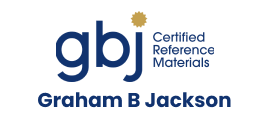Abstract
The analysis of wear metals and additive metals in oils by ICP-OES has traditionally depended on the use of organometallic certified reference materials (CRMs). Inorganic Ventures (IV) has investigated a new approach to instrument calibration for testing metals in oils using aqueous CRMs diluted in an organic solvent. This new organic solvent, IV-77742, provides miscibility for both the inorganic metals standards and the oil samples. Aqueous inorganic Co and Y were added as internal standards to the organic solvent, making the dilution of standards and samples an easy, one-step process. A calibration method was validated using the hybrid aqueous/organic CRMs by analyzing both traditional organometallic CRMs and NIST SRM 1085c as samples vs. IV’s hybrid aqueous/organic CRMs. The benefits of using these hybrid aqueous/organic CRMs are discussed; including the ability to analyze for elements in oils that are currently difficult or not possible to test, such as the addition of sulfur to the calibration standards. This method analyzes all the elements prescribed for testing in ASTM methods D5185-18 and D6595-16. Optionally, an oils testing laboratory may continue to use traditional organometallic standards, but substitute this newly developed organic solvent, IV-77742, as a diluent for standards and samples. IV-77742 offers a cleaner, less hazardous, and more environmentally friendly alternative to traditional organic solvents.
Introduction
The impetus for the development of a new type of certified reference material for metals in oil came from Dr. Paul Gaines, the founder of Inorganic Ventures. Paul was interested in developing wear metal standards using the aqueous, inorganic forms of the metals of interest. Inorganic Ventures has demonstrated that the inorganic forms of the 27 metals of interest, in dilute acid, are certified as stable for 5 years in sealed, unopened TCT™ (Transpiration Control Technology) bags. IV set out to make standards in which the metals in dilute acid would be miscible and stable in an organic solvent. This organic solvent needed to simultaneously dissolve the wear metals samples that are in a motor oil and allow the aqueous standards to be miscible. The common organic solvents that are traditionally used in this type of testing are quite toxic. Inorganic Ventures also sought to find a solvent that would be less hazardous for the analyst and the greater ecology.
Method Development
Many trials were needed to find a solvent that fit the stated requirements. This organic solvent is primarily made from green and sustainable resources. Having a solvent that is primarily sourced from greener and less hazardous materials helps push forward on increased environmental sustainability efforts. Two metal concentrates in dilute acid are used for the two sets of calibration standards. These concentrates contain 1000 µg/mL of each element with the density recorded for the solutions. The first element concentrate is in a 10% v/v HNO3 matrix. The second concentrate contains the elements that traditionally require HF for stability. The matrix of this concentrate is 20% v/v HCl / 0.6% v/v HF (Figure 1). After dilution, the highest concentration of HF in the working calibration standards is 0.03% v/v HF.
Conclusions
Inorganic Ventures has demonstrated that it is possible to make hybrid aqueous / organic solvent standards for the testing of wear and additive metals in oils. The stability of the aqueous standard concentrates is documented for up to five years when stored in TCT bags. The organic solvent that was developed is primarily sourced from green and sustainable materials, with lower health hazards than traditional solvents currently used in oils testing laboratories. The analysis of traditional organometallic standards as samples vs. the hybrid aqueous / organic solvent standards confirmed the accuracy of the hybrid standards. The sample preparation method for using the hybrid aqueous / organic solvent standards was demonstrated to be the same as the method using traditional organometallic standards, ensuring an easy transition from traditional standards. This method analyzes all the elements prescribed for testing in ASTM methods D5185-18 and D6595-16 plus several other elements. If a laboratory wishes to continue to use the traditional organometallic standards this organic solvent, IV-77742 with internal standards may be used as a diluent for those standards and samples while offering a cleaner, more environmentally friendly solvent.
